Financial News
Charles River Laboratories’s (NYSE:CRL) Q3: Beats On Revenue
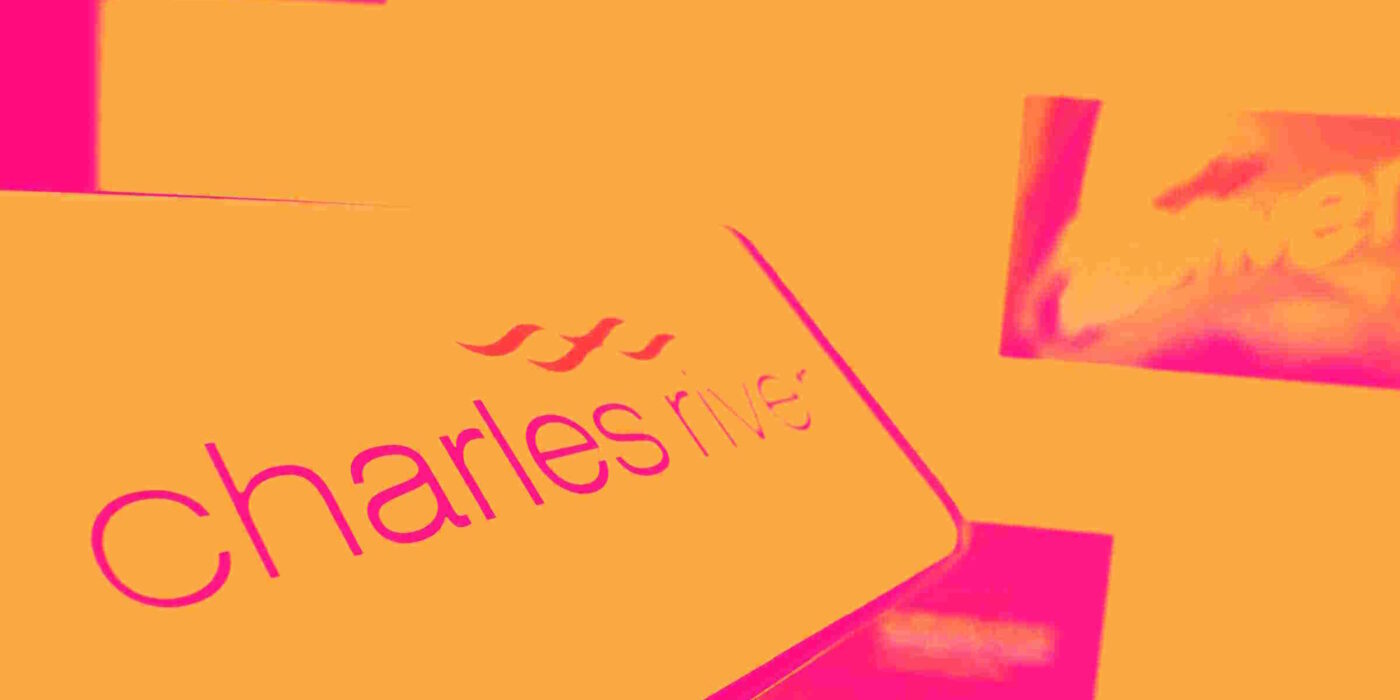
Lab services company Charles River Laboratories (NYSE: CRL) announced better-than-expected revenue in Q3 CY2025, but sales were flat year on year at $1.00 billion. Its non-GAAP profit of $2.43 per share was 3.9% above analysts’ consensus estimates.
Is now the time to buy Charles River Laboratories? Find out by accessing our full research report, it’s free for active Edge members.
Charles River Laboratories (CRL) Q3 CY2025 Highlights:
- Revenue: $1.00 billion vs analyst estimates of $994.2 million (flat year on year, 1.1% beat)
- Adjusted EPS: $2.43 vs analyst estimates of $2.34 (3.9% beat)
- Adjusted EBITDA: $184.5 million vs analyst estimates of $231 million (18.4% margin, 20.1% miss)
- Management slightly raised its full-year Adjusted EPS guidance to $10.20 at the midpoint
- Operating Margin: 13.3%, up from 11.6% in the same quarter last year
- Free Cash Flow Margin: 3.5%, down from 21.1% in the same quarter last year
- Organic Revenue fell 1.6% year on year vs analyst estimates of 2.5% declines (87.8 basis point beat)
- Market Capitalization: $8.75 billion
James C. Foster, Chair, President and Chief Executive Officer, said, “Our solid third-quarter financial results demonstrate that the demand for our extensive portfolio of early-stage research and manufacturing products and services remains stable. We believe that positive signals are beginning to emerge which indicate that the industry may be on a path towards recovery; however, sustained improvement in our business will take time. There is still some uncertainty in the healthcare sector, so we are remaining cautious at this time.”
Company Overview
Named after the Massachusetts river where it was founded in 1947, Charles River Laboratories (NYSE: CRL) provides non-clinical drug development services, research models, and manufacturing support to pharmaceutical and biotechnology companies.
Revenue Growth
Reviewing a company’s long-term sales performance reveals insights into its quality. Any business can experience short-term success, but top-performing ones enjoy sustained growth for years. Regrettably, Charles River Laboratories’s sales grew at a mediocre 7.3% compounded annual growth rate over the last five years. This was below our standard for the healthcare sector and is a tough starting point for our analysis.
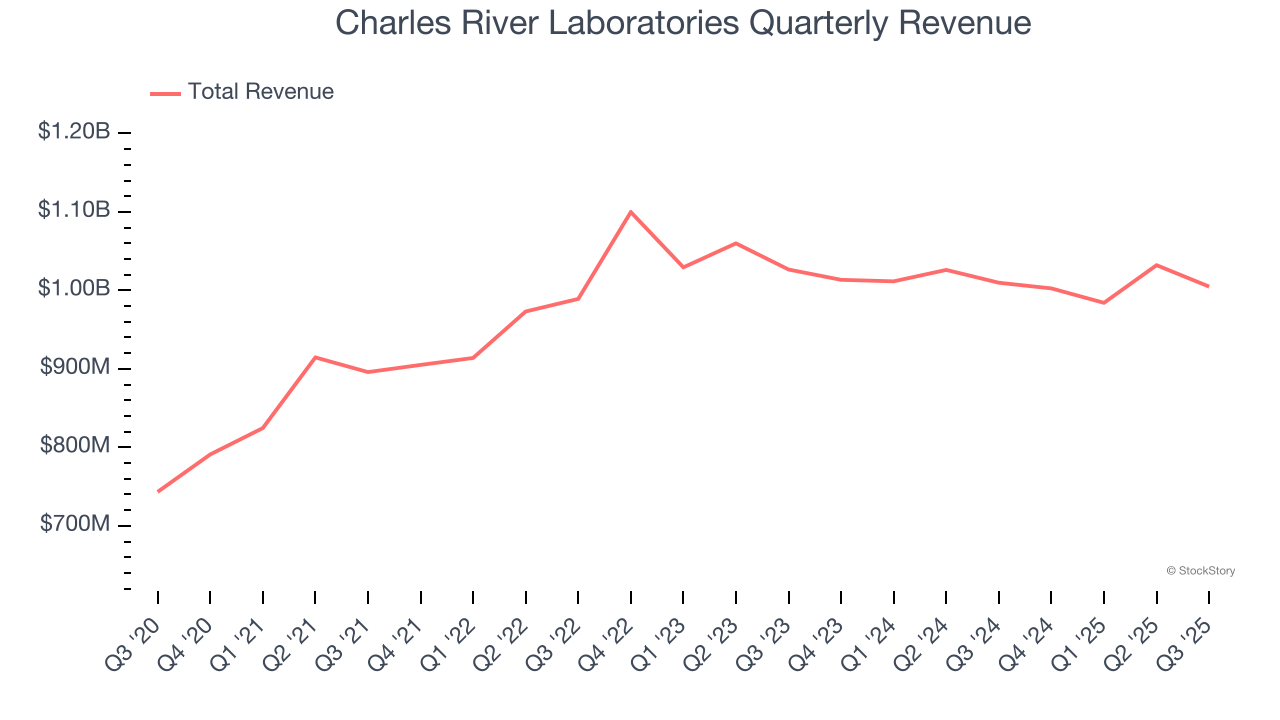
We at StockStory place the most emphasis on long-term growth, but within healthcare, a half-decade historical view may miss recent innovations or disruptive industry trends. Charles River Laboratories’s performance shows it grew in the past but relinquished its gains over the last two years, as its revenue fell by 2.3% annually. 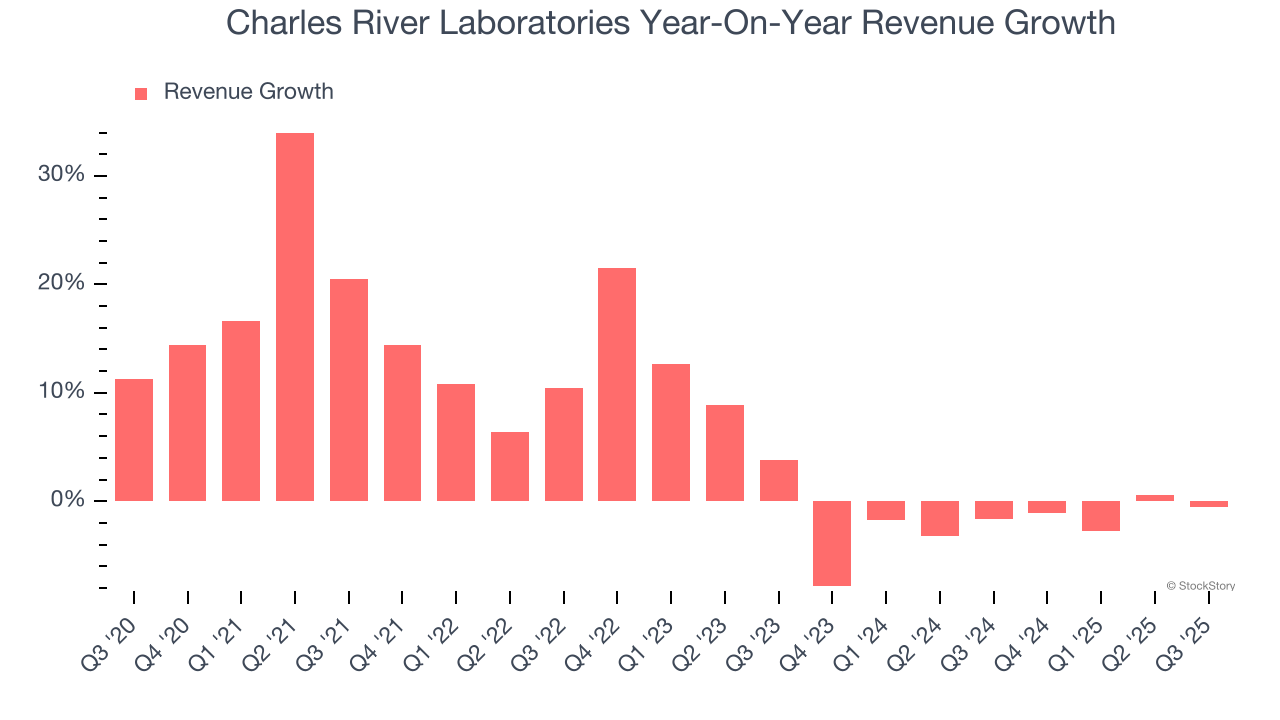
Charles River Laboratories also reports organic revenue, which strips out one-time events like acquisitions and currency fluctuations that don’t accurately reflect its fundamentals. Over the last two years, Charles River Laboratories’s organic revenue averaged 2.3% year-on-year declines. Because this number aligns with its two-year revenue growth, we can see the company’s core operations (not acquisitions and divestitures) drove most of its results. 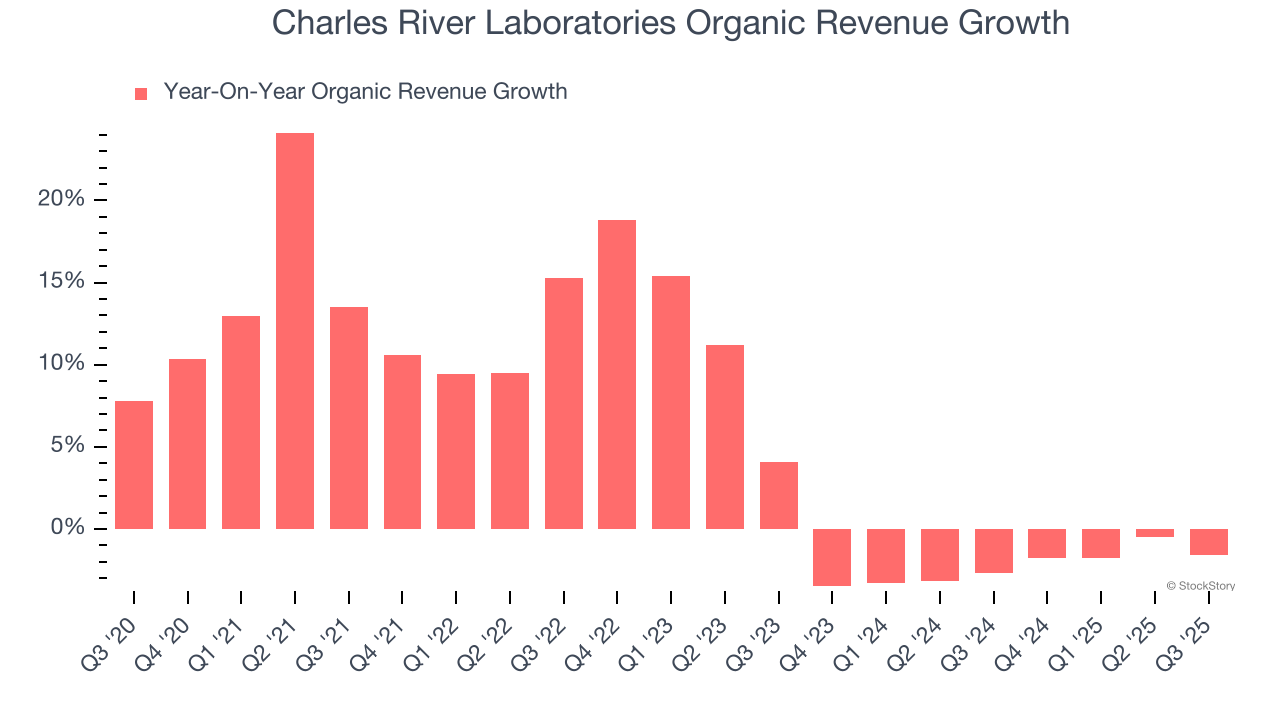
This quarter, Charles River Laboratories’s $1.00 billion of revenue was flat year on year but beat Wall Street’s estimates by 1.1%.
Looking ahead, sell-side analysts expect revenue to grow 1.1% over the next 12 months. While this projection implies its newer products and services will catalyze better top-line performance, it is still below average for the sector.
While Wall Street chases Nvidia at all-time highs, an under-the-radar semiconductor supplier is dominating a critical AI component these giants can’t build without. Click here to access our free report one of our favorites growth stories.
Operating Margin
Charles River Laboratories has done a decent job managing its cost base over the last five years. The company has produced an average operating margin of 12.9%, higher than the broader healthcare sector.
Analyzing the trend in its profitability, Charles River Laboratories’s operating margin decreased by 12.4 percentage points over the last five years. The company’s two-year trajectory also shows it failed to get its profitability back to the peak as its margin fell by 11.9 percentage points. This performance was poor no matter how you look at it - it shows its expenses were rising and it couldn’t pass those costs onto its customers.
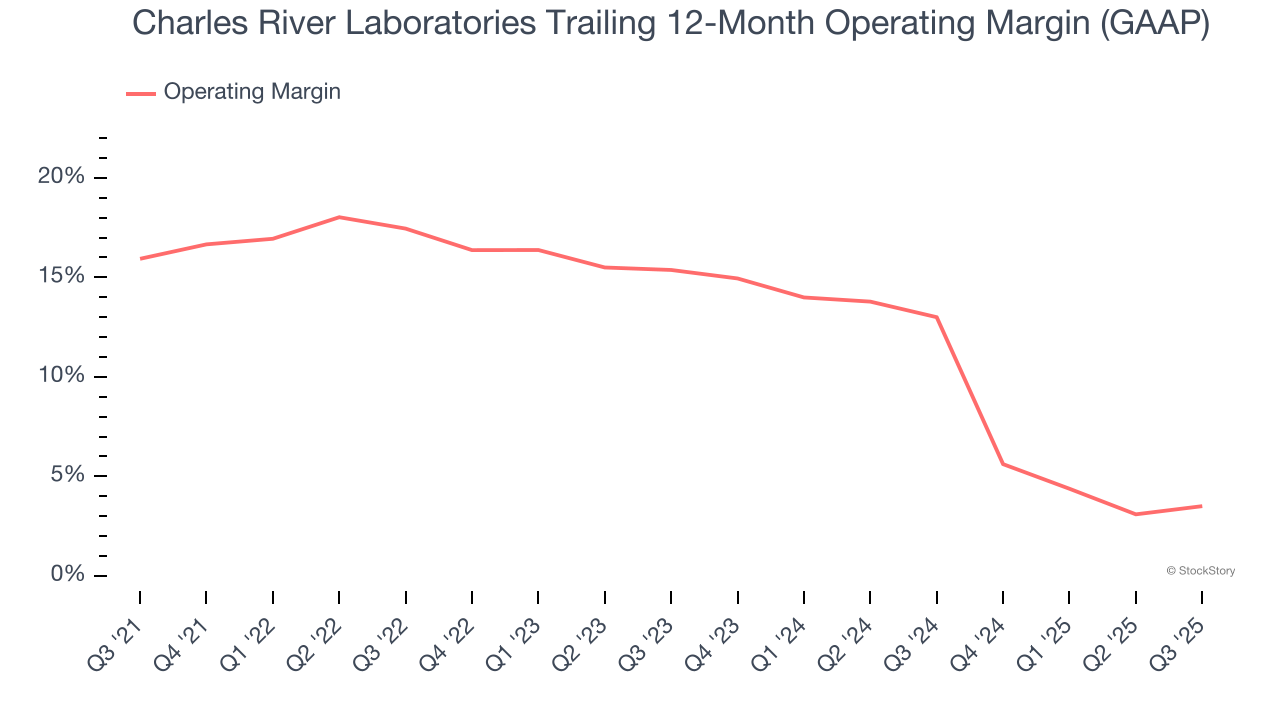
This quarter, Charles River Laboratories generated an operating margin profit margin of 13.3%, up 1.7 percentage points year on year. This increase was a welcome development and shows it was more efficient.
Earnings Per Share
We track the long-term change in earnings per share (EPS) for the same reason as long-term revenue growth. Compared to revenue, however, EPS highlights whether a company’s growth is profitable.
Charles River Laboratories’s decent 6.3% annual EPS growth over the last five years aligns with its revenue performance. This tells us it maintained its per-share profitability as it expanded.
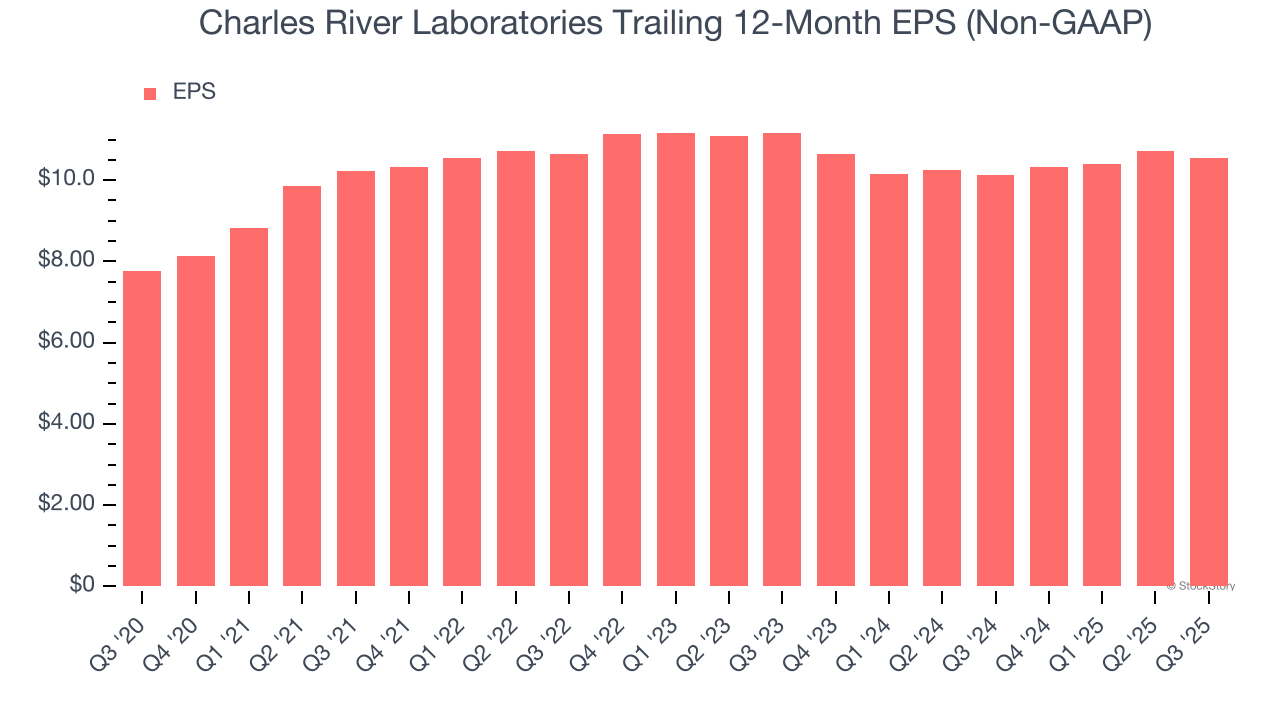
In Q3, Charles River Laboratories reported adjusted EPS of $2.43, down from $2.59 in the same quarter last year. Despite falling year on year, this print beat analysts’ estimates by 3.9%. Over the next 12 months, Wall Street expects Charles River Laboratories’s full-year EPS of $10.55 to stay about the same.
Key Takeaways from Charles River Laboratories’s Q3 Results
It was good to see Charles River Laboratories narrowly top analysts’ organic revenue expectations this quarter. We were also happy its revenue narrowly outperformed Wall Street’s estimates. Overall, this print had some key positives. The stock remained flat at $178.01 immediately following the results.
So do we think Charles River Laboratories is an attractive buy at the current price? We think that the latest quarter is only one piece of the longer-term business quality puzzle. Quality, when combined with valuation, can help determine if the stock is a buy. We cover that in our actionable full research report which you can read here, it’s free for active Edge members.
More News
View More



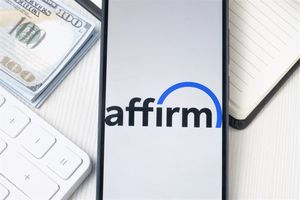
Recent Quotes
View More
Quotes delayed at least 20 minutes.
By accessing this page, you agree to the Privacy Policy and Terms Of Service.



